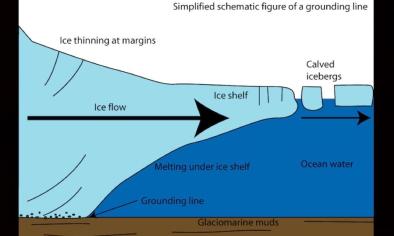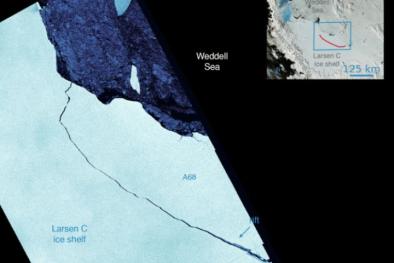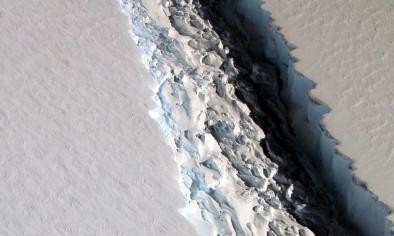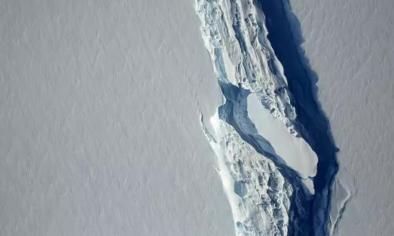Fracture propagation and stability of ice shelves governed by ice shelf heterogeneity
Abstract
Tabular iceberg calving and ice shelf retreat occurs after full-thickness fractures, known as rifts, propagate across an ice shelf. A quickly evolving rift signals a threat to the stability of Larsen C, the Antarctic Peninsula's largest ice shelf. Here we reveal the influence of ice shelf heterogeneity on the growth of this rift, with implications that challenge existing notions of ice shelf stability. Most of the rift extension has occurred in bursts after overcoming the resistance of suture zones that bind together neighboring glacier inflows. We model the stresses in the ice shelf to determine potential rift trajectories. Calving perturbations to ice flow will likely reach the grounding line. The stability of Larsen C may hinge on a single suture zone that stabilizes numerous upstream rifts. Elevated fracture toughness of suture zones may be the most important property that allows ice shelves to modulate Antarctica's contribution to sea level rise.
Plain Language Summary
The Larsen C Ice Shelf is the largest floating mass of glacier ice attached to the Antarctic Peninsula. A giant crack began growing across the ice shelf in 2014. By the end of 2016, the crack has grown in length by over 70 km. Sometime in the near future, it will release an iceberg the size of Delaware. Some scientists believe that this will be just the first in a series of cracks that may soon cause the ice shelf to shatter, just like its neighbor Larsen B in 2002. We studied this crack using satellite data from the years 2005 through 2016. We found that the crack grows in bursts, and it slows down when it reaches patches of stronger ice. We use a computer model to predict what direction the crack will grow. After the crack releases a giant iceberg, most of the remaining ice will speed up. Whether the ice shelf survives or soon shatters depends on a single, narrow stripe of strong ice that is currently preventing many additional cracks from growing across the ice shelf. If this stripe of strong ice is growing weaker, Larsen C may soon be history.
Related Content






